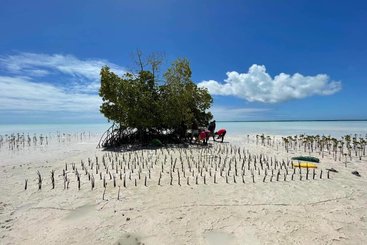Small Island Developing States (SIDS) have had considerable success in getting climate-induced loss and damage on to the international policy agenda, as evidenced by the decision at COP27 to create a specific Loss and Damage Fund. However, the hard task of harnessing adequate support to address loss and damage hinges on being able to calculate what constitutes ‘loss’ and ‘damage’, both retrospectively and prospectively.
SIDS suffer higher levels of loss and damage than non-SIDS across all income groups. They experience five times more climate change-attributable deaths due to extreme weather, and on average 0.8% of SIDS’ collective gross domestic product (GDP) is lost every year due to climate disasters. For small, undiversified SIDS economies, this is extremely significant.
Collectively, floods and storms are projected to produce cumulative climate change attributable loss and damage of $56 billion in SIDS under a 2°C warming scenario by 2050. This would represent an 11% increase in annual loss and damage over the next 23 years (2023–2045) compared with the past 23 years (2000–2022). These projections do not include indirect economic impacts or the impacts of slow-onset events, meaning they likely underestimate the true loss and damage that may occur in SIDS.
This working paper presents the estimated impacts of climate change in SIDS over the past 23 years, as well as the climate-change attributable loss and damage expected by 2050. Three recommendations are provided to inform the development of adequate financial mechanisms to help SIDS cope with these impacts:
- Mechanisms to address loss and damage need to focus on loss and damage under a 2°C+ scenario.
- There needs to be a clearer articulation, and calculation, of the indirect costs of climate change, which could be significant.
- Data gaps must be filled as a matter of urgency, including through more attribution studies in SIDS and other highly vulnerable countries.






